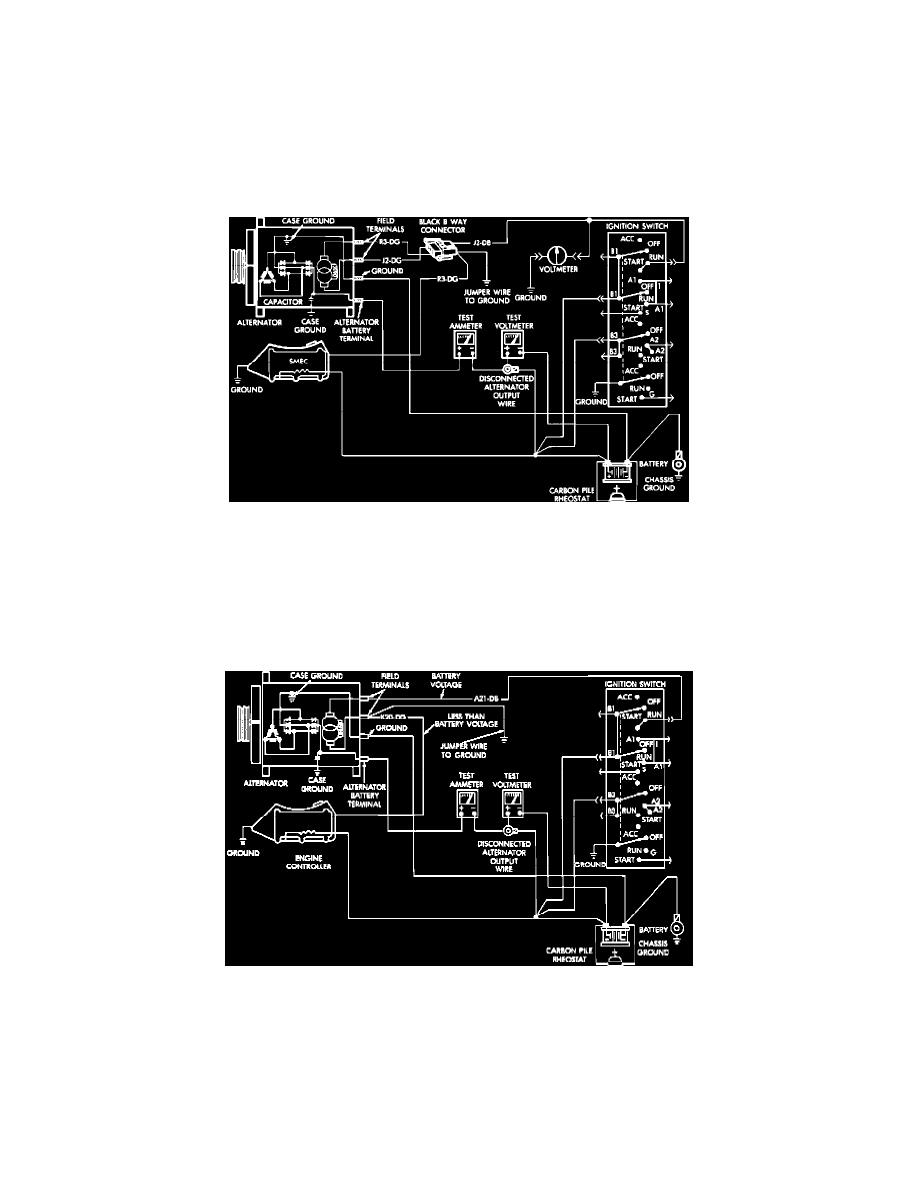Caravan AWD V6-201 3.3L (1991)

Generator: Testing and Inspection
Alternator Output Wire Resistance Test
On models equipped with airbags, before attempting to diagnose or service components, disconnect and isolate battery ground cable, then
wait at least 10 minutes prior to beginning service. Failure to do so may result in accidental deployment or possible personal injury.
TESTING
1.
Disconnect battery ground cable.
2.
Disconnect "B+" lead at alternator output terminal.
Fig. 1 Alternator output wire resistance test. Except front wheel drive
3.
Connect a 0-150 amp D.C. ammeter in series between alternator "B+" terminal and disconnected "B+" lead wire.
4.
Connect positive lead wire of a suitable voltmeter to disconnected "B+" lead wire, then connect negative lead to battery positive post.
5.
Remove air hose between Engine Controller and air cleaner.
6.
On 1988-91 models except 1991 Front Wheel Drive vans and wagons and Jeep Cherokee, Comanche and Wrangler, ground one end of a
suitable jumper wire and probe green R3 wire. This may generate a fault code. Use caution not to ground J2 wire. Both R3 and J2 wires are
green on alternator side of wire connector. On dash side of connector, R3 wire is green, while J2 wire is blue.
Fig. 2 Alternator output wire resistance test. Front wheel drive
7.
On 1991 Front Wheel Drive vans and wagons, connect suitable jumper wire to ground and K20 (green) terminal, at rear of alternator. This may
generate a fault code. Do not connect A21 (blue) circuit to ground, as fusible link will burn.
